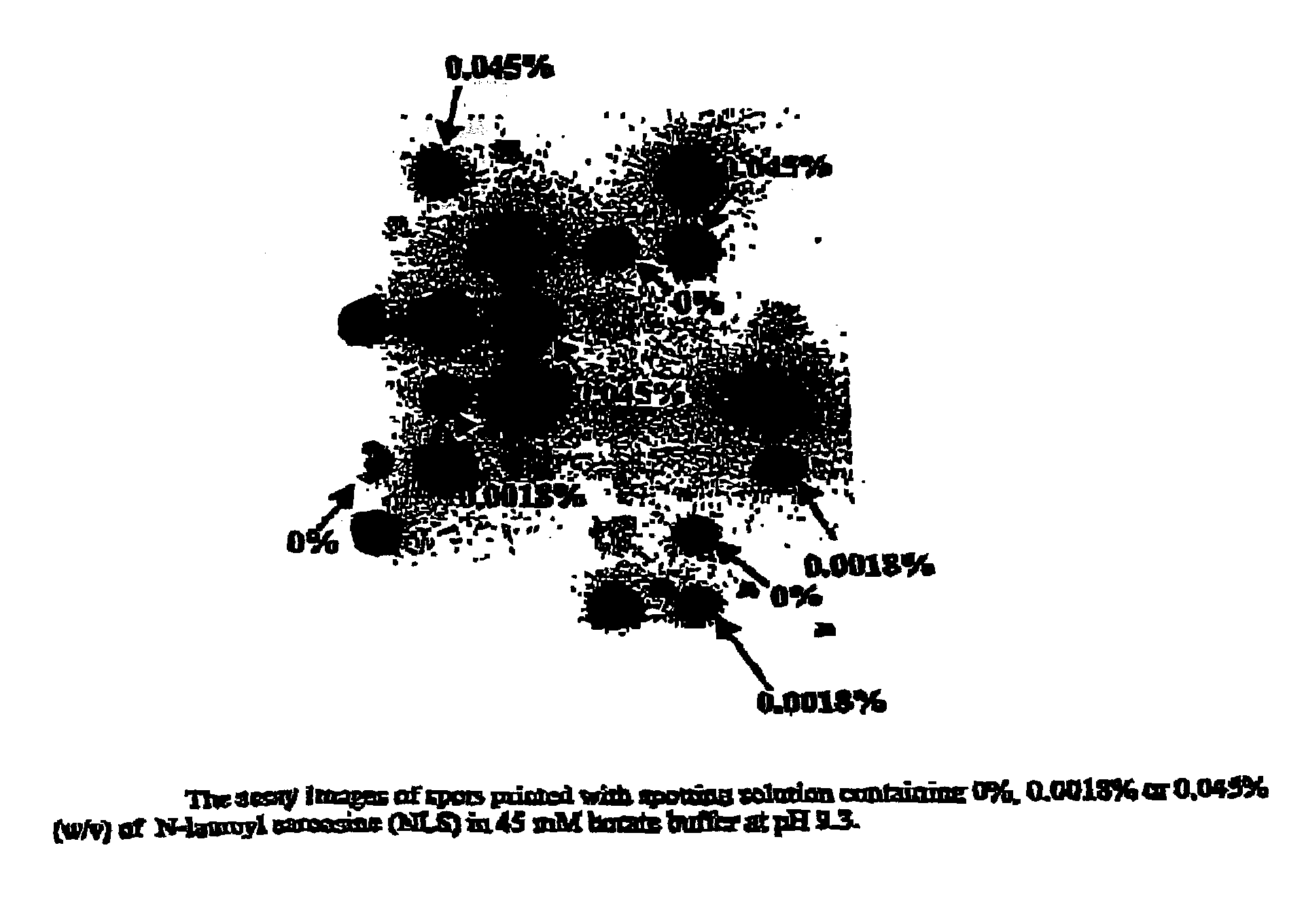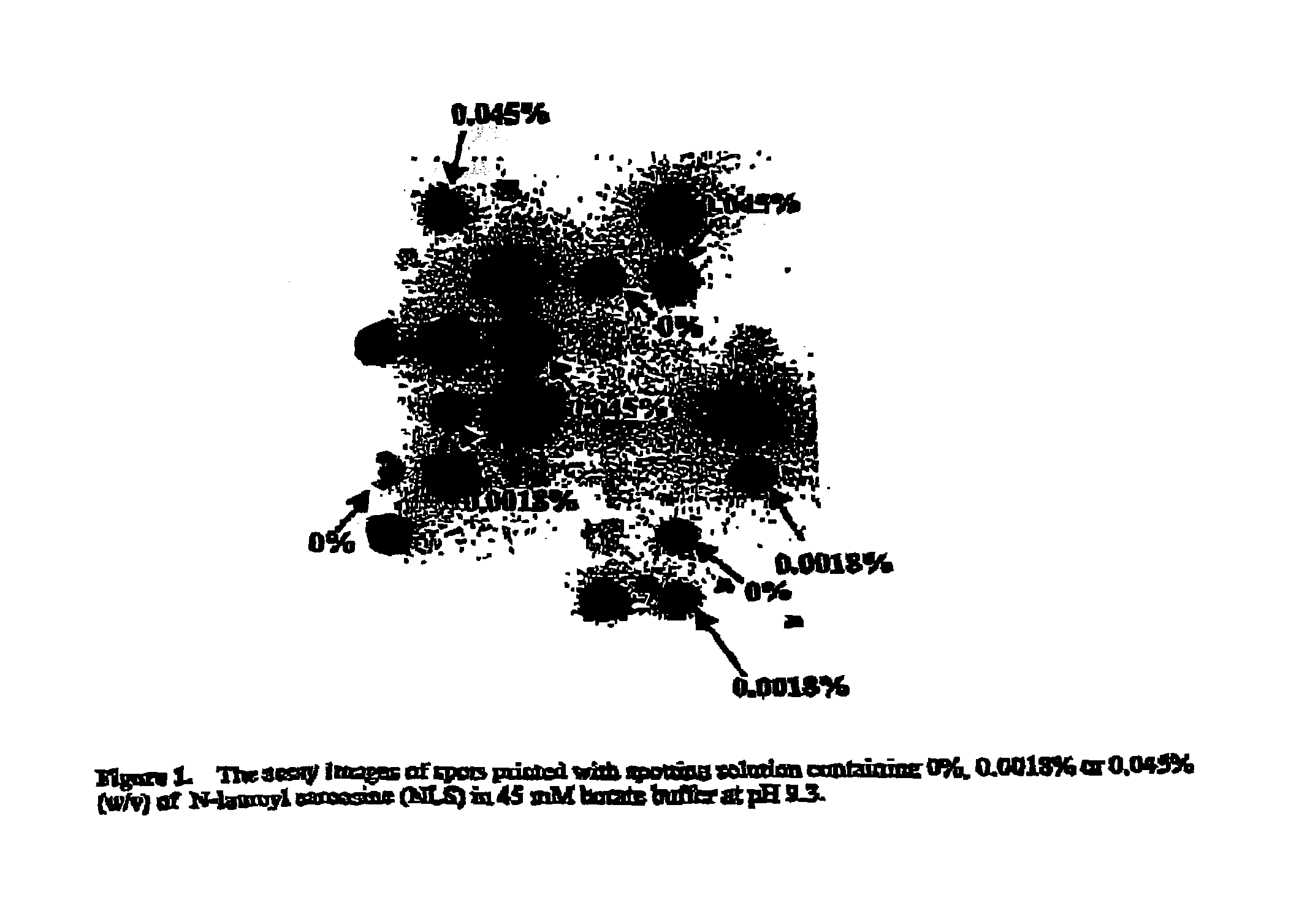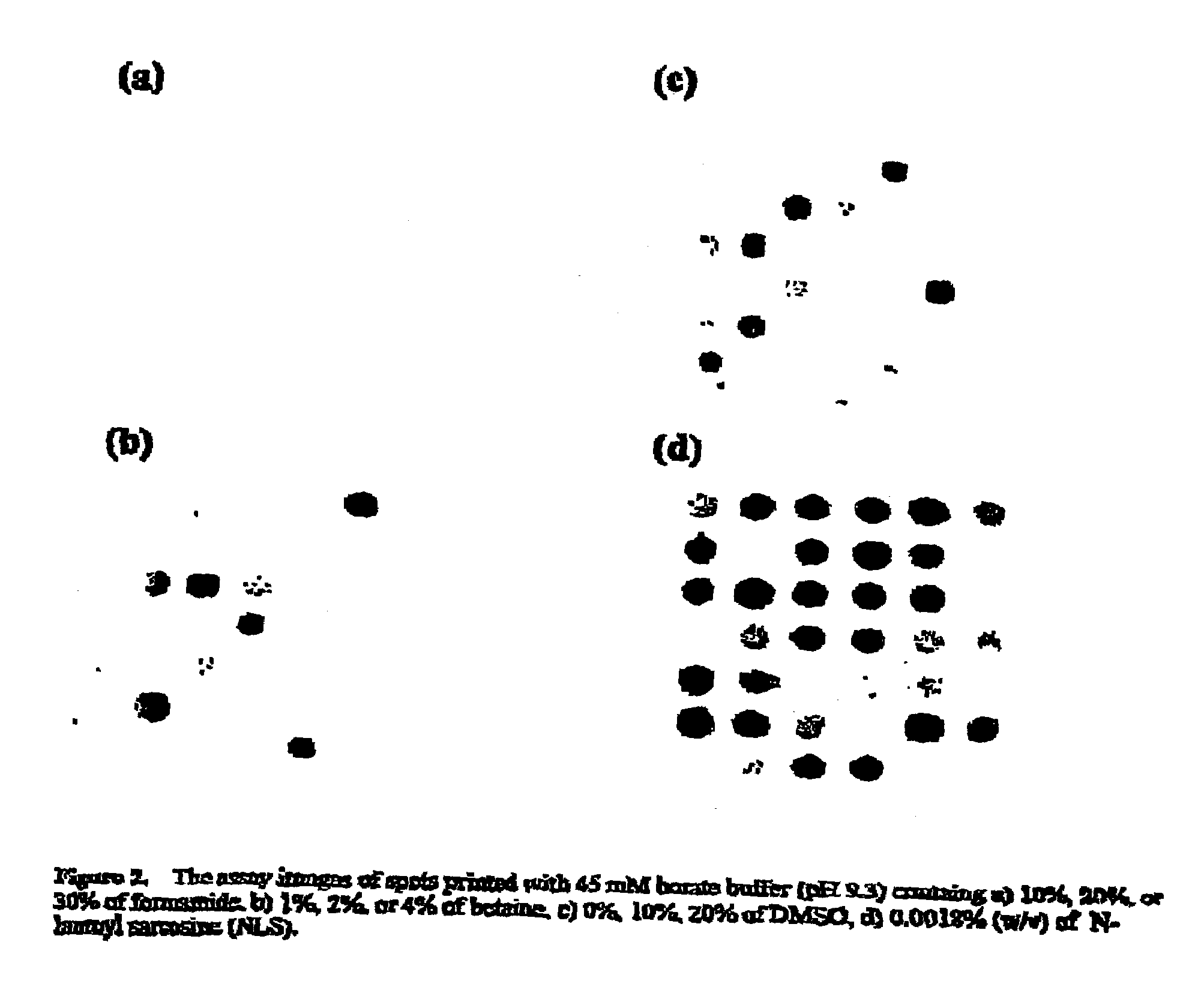Formulation of spotting solution to achieve uniform spot size and morphology and for nondestructive quality control of assay articles
a technology of spotting solution and formulation method, which is applied in the field of formulation of spotting solution and spotting solution for the production of assay articles, can solve the problems of poor spot uniformity, toxic reaction buffer, and many solvents, and achieve cost-effective, rapid and convenient effects
- Summary
- Abstract
- Description
- Claims
- Application Information
AI Technical Summary
Benefits of technology
Problems solved by technology
Method used
Image
Examples
example 1
Effect of Concentration of N-Lauroyl Sarcosine on Spot Size and Morphology
[0094]The amount of N-lauroyl sacrosine (NLS) needed to provide an effective spotting solution was investigated. Three different spotting solutions were prepared with 37 mM xylene cyanol in 45 mM borate buffer (pH 9.3) and either 0.045% (w / v) NLS, 0.0018% (w / v) NLS, or no NLS. Each of the three solutions were combined with IL6, TNF, IL10, and IL2, and then spotted on a 96-well plate using an inkjet-based arrayer. Table 1 summarizes the dependence of the Correlation of Variance (CV's) of signal intensities in each assay on the concentration of NLS. The CV's of the signal intensities with assay were lower when a concentration of 0.0018% (w / v) NLS was used in the spotting solution compared to the absence of NLS in the spotting solutions. However, with a higher concentration of 0.045% (w / v) NLS, the CV's were higher, mainly due to the diffused and enlarged spot shapes with higher concentrations of NLS. FIG. 1 show...
example 2
Comparison of N-Lauroyl Sarcosine with Known Chemicals on the Effect of Spot Size and Morphology in Spot Arraying
[0096]N-lauroyl sacrosine was compared with other chemicals used in the art for improving spot size and morphology in spotting solutions. Several spotting solutions were prepared with (1) formamide, (2) betaine, (3) DMSO, or (4) N-lauroyl sacrosine and 0.37 mM xylene cyanol in 45 mM borate buffer (pH 9.3). The assay images of the arrays printed on a 96-well plate using the various spotting solutions an inkjet-based arrayer are shown in FIGS. 2A-2D. FIG. 2A shows the results for the spotting solution containing 10%, 20%, or 30% (v / v) formamide, FIG. 2B shows the results for the spotting solution containing 1%, 2%, or 4% (w / v) betaine, FIG. 2C shows the results for the spotting solution containing 0%, 10%, or 20% (v / v) dimethyl sulfoxide, and FIG. 2D shows the results for the spotting solution containing 0.0018% (w / v) N-lauroyl sacrosine. While formamide, betaine, and DMSO ...
example 3
Comparison of Spotting Solution Containing N-Lauroyl Sarcosine with Spotting Solutions on the Effect of Spot Size and Morphology in Spot Arraying
[0097]A spotting solution of this invention containing 0.0018% (w / v) N-lauroyl sacrosine and 0.37 mM xylene cyanol in 45 mM borate buffer (pH 9.3) was compared with two commercial formulations of spotting solutions sold as Micro Spotting Solutions Plus (Catalog No. MSP; TeleChem International, Inc., Sunnyvale, Calif.) and Genetix Aldehyde Microarray Spotting Solution (Catalog No. K2055; Genetix Reagents, St. James, N.Y.). All of the solutions were spotted on a 96-well plate using an inkjet-based arrayer. As shown in the array images in FIGS. 3A-C, the spotting solution of this invention containing 0.0018% (w / v) NLS (FIG. 3B) was found to be superior to MicroSpotting Solution Plus (FIG. 3A) and Genetix Aldehyde Microarray Spotting Solution (FIG. 3C) in providing array spots having more uniform spot size and morphology. In FIG. 3C, the spots ...
PUM
 Login to View More
Login to View More Abstract
Description
Claims
Application Information
 Login to View More
Login to View More - R&D
- Intellectual Property
- Life Sciences
- Materials
- Tech Scout
- Unparalleled Data Quality
- Higher Quality Content
- 60% Fewer Hallucinations
Browse by: Latest US Patents, China's latest patents, Technical Efficacy Thesaurus, Application Domain, Technology Topic, Popular Technical Reports.
© 2025 PatSnap. All rights reserved.Legal|Privacy policy|Modern Slavery Act Transparency Statement|Sitemap|About US| Contact US: help@patsnap.com



